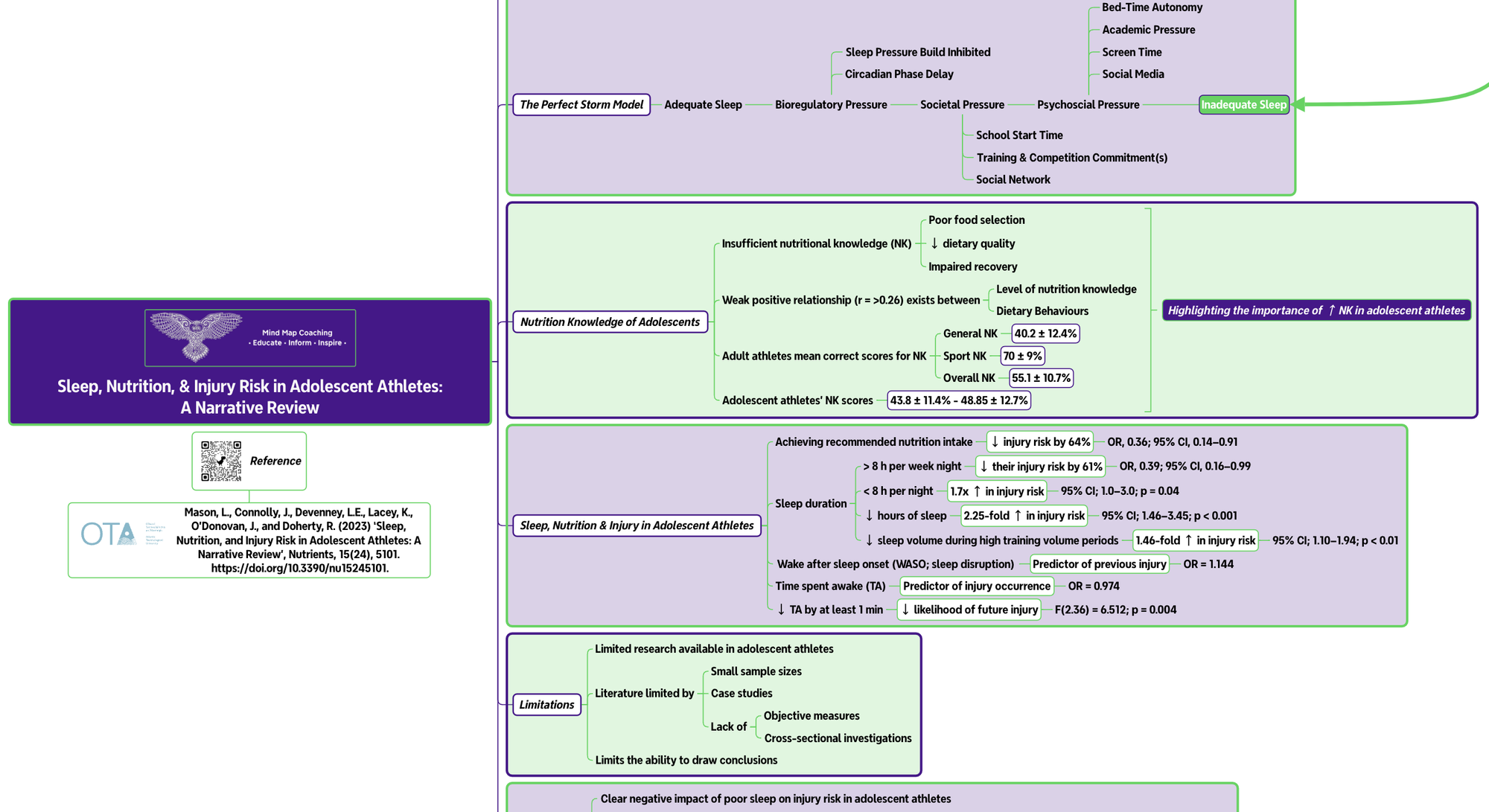Sleep, Nutrition, and Injury Risk in Adolescent Athletes: A Narrative Review
During adolescence, sleep-wake cycles develop and adapt in regulating sleep. This adaptation increases tolerance to sleep pressure and is influenced by maturation. Additionally, delays in circadian rhythmicity contribute to inadequate sleep.

Sleep is crucial for adolescent athletes' recovery, influencing growth, repair, and immunity, and is linked to performance, injury risk, and mental health. Athletes require more sleep than the general population, suggesting standard sleep recommendations may not suffice, necessitating a personalized approach to sleep health.
Adolescent athletes typically get around 6.3 hours of sleep, less than the advised 8–10 hours, due to developmental changes in sleep regulation and circadian rhythms. Sleep–wake cycles also undergo development during adolescence whereby adaptation occurs in sleep regulation during this phase. These adaptations to sleep regulation increase sleep pressure tolerance (reduced adenosine accumulation) and are driven by the maturation of physiological, psychological, and cognitive functioning along with delays in circadian rhythmicity, thus creating an environment for inadequate sleep influenced by external factors associated with adolescence. This results in ever-decreasing time spent asleep during the ages of 15–18 years, with research reporting a decrease of ~1.5–3 h during this period.
This article aims to provide a comprehensive review of the available literature on the importance of sleep and nutrition interactions in injury risk in adolescent athletes. Furthermore, it provides foundations for informing further investigations exploring the relation of sleep and nutrition interactions to recovery during adolescence.

